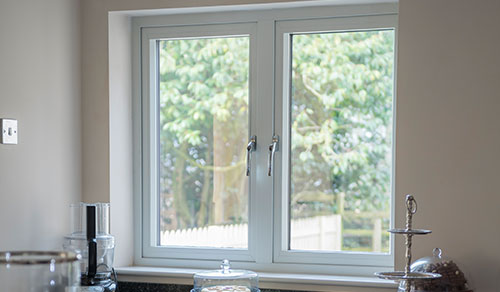Window installation is a crucial aspect of home improvement and construction, significantly affecting energy efficiency, aesthetics, and security. This report aims to provide an in-depth overview of the window installation process, including types of windows, preparation, installation techniques, and post-installation considerations.
Types of Windows
Before diving into the installation process, it is essential to understand the various types of windows available. Each type has unique features and benefits, catering to different needs and preferences.
- Double Glazed Windows St Albans-Hung Windows: These windows have two sashes that slide vertically. They are popular for their classic appearance and ease of cleaning.
- Casement Windows: Hinged at the side, casement windows open outward. They provide excellent ventilation and unobstructed views.
- Sliding Windows: These windows slide horizontally and are ideal for wide openings. They are easy to operate and maintain.
- Awning Windows: Hinged at the top and opening outward, awning windows are excellent for ventilation, especially in rainy conditions.
- Picture Windows: Fixed windows that do not open, picture windows provide expansive views and natural light.
- Bay and Bow Windows: These windows extend outward from the home, creating a nook inside. They add character and space to a room.
Preparation for Installation
Proper preparation is crucial for a successful window installation. The following steps should be taken:

- Measure the Opening: Accurate measurements are essential. Measure the width and height of the window opening at three points (top, middle, and bottom) to ensure the new window fits properly.
- Select the Right Window: Choose a window that suits the style of your home and meets energy efficiency standards. Consider factors such as frame material (vinyl, wood, aluminum), glazing options, and energy ratings.
- Gather Tools and Materials: Ensure you have all necessary tools, including a level, tape measure, utility knife, screwdriver, hammer, and caulk. Additionally, gather materials such as shims, insulation, and flashing tape.
- Check Local Building Codes: Verify any local regulations regarding window installation, including permits and safety standards.
Installation Process
The window installation process can vary depending on the type of window and the existing structure. Below is a general step-by-step guide for installing a new window.
- Remove the Old Window: Carefully remove the existing window. Start by taking off any trim or casing, then remove the sashes. If the window is nailed in, use a pry bar to detach it from the frame.
- Prepare the Opening: Inspect the window opening for any damage or rot. Repair or replace any compromised framing or sheathing. Ensure the opening is clean and free of debris.
- Dry Fit the New Window: Place the new window into the opening to check the fit. Make adjustments as necessary to ensure it sits level and plumb.
- Install the Window:
- Level and Plumb: Use shims to adjust the window until it is level and plumb. Check with a level to confirm accuracy.
- Secure the Window: Once positioned correctly, secure the window by fastening it to the frame with screws or nails, following the manufacturer's instructions.
- Insulate the Gaps: Fill any gaps between the window frame and the rough opening with insulation foam or caulk. This step is vital for energy efficiency.
- Install Flashing: Apply flashing tape around the exterior edges of the window to prevent water intrusion. Ensure it overlaps the window and the siding.
- Replace Trim and Caulk: Reinstall any interior trim or casing. Finish by applying caulk around the exterior edges of the window to seal it and enhance its appearance.
Post-Installation Considerations
After installation, several factors should be considered to ensure the longevity and performance of the new windows.
- Cleaning: Clean the windows to remove any dust, debris, or fingerprints that may have accumulated during installation.
- Check for Proper Operation: Open and close the windows to ensure they operate smoothly. Address any issues immediately.
- Monitor for Air Leaks: After installation, check for any drafts or air leaks around the window. If detected, additional caulking or insulation may be necessary.
- Maintain Regularly: Regular maintenance is essential for the longevity of windows. This includes cleaning, inspecting seals, and lubricating moving parts.
- Consider Window Treatments: Depending on the window's location and purpose, consider installing blinds, shades, or curtains for privacy and light control.
Conclusion
Window installation is a significant home improvement project that can enhance energy efficiency, aesthetics, and comfort. By understanding the types of windows available, preparing adequately, and following a systematic installation process, homeowners can achieve successful results. Regular maintenance and attention to detail post-installation will ensure that the windows continue to perform optimally for years to come. Whether you choose to undertake the installation yourself or hire a professional, the benefits of new windows are undeniable, making it a worthwhile investment in your home.








